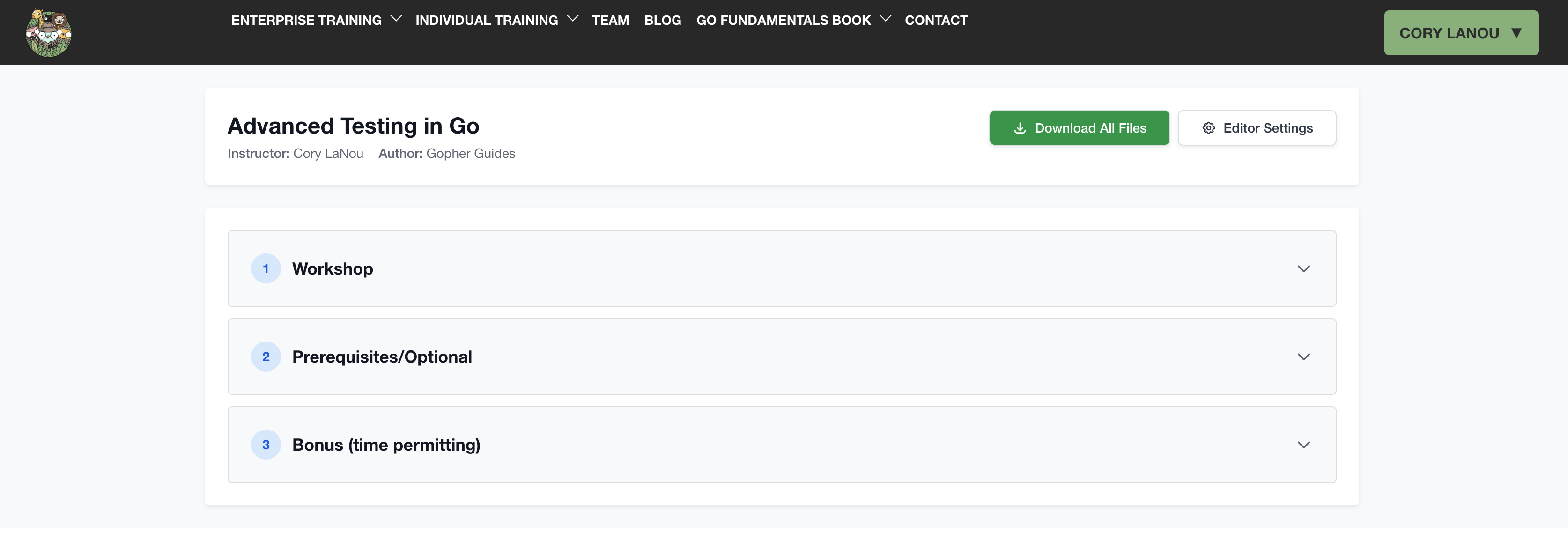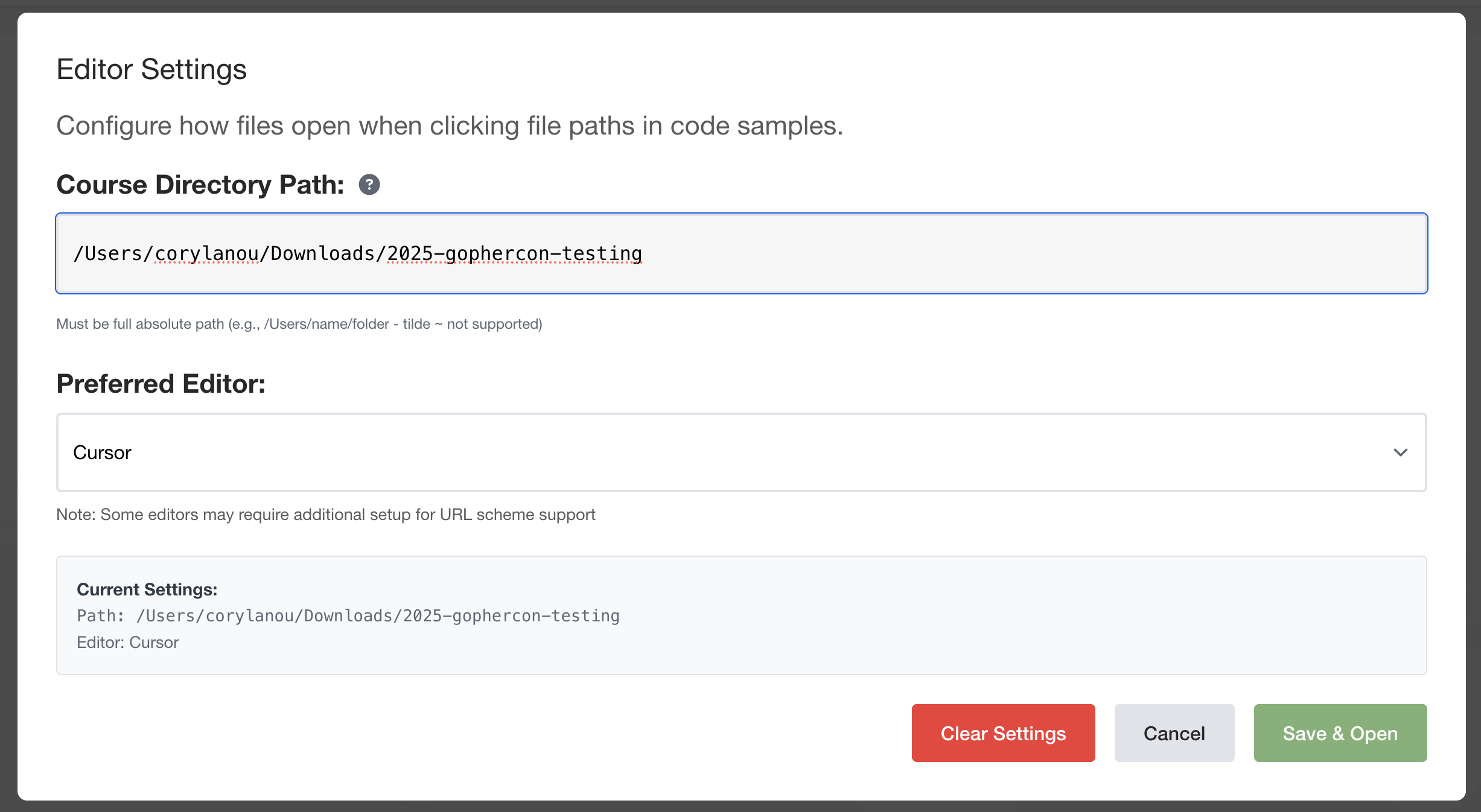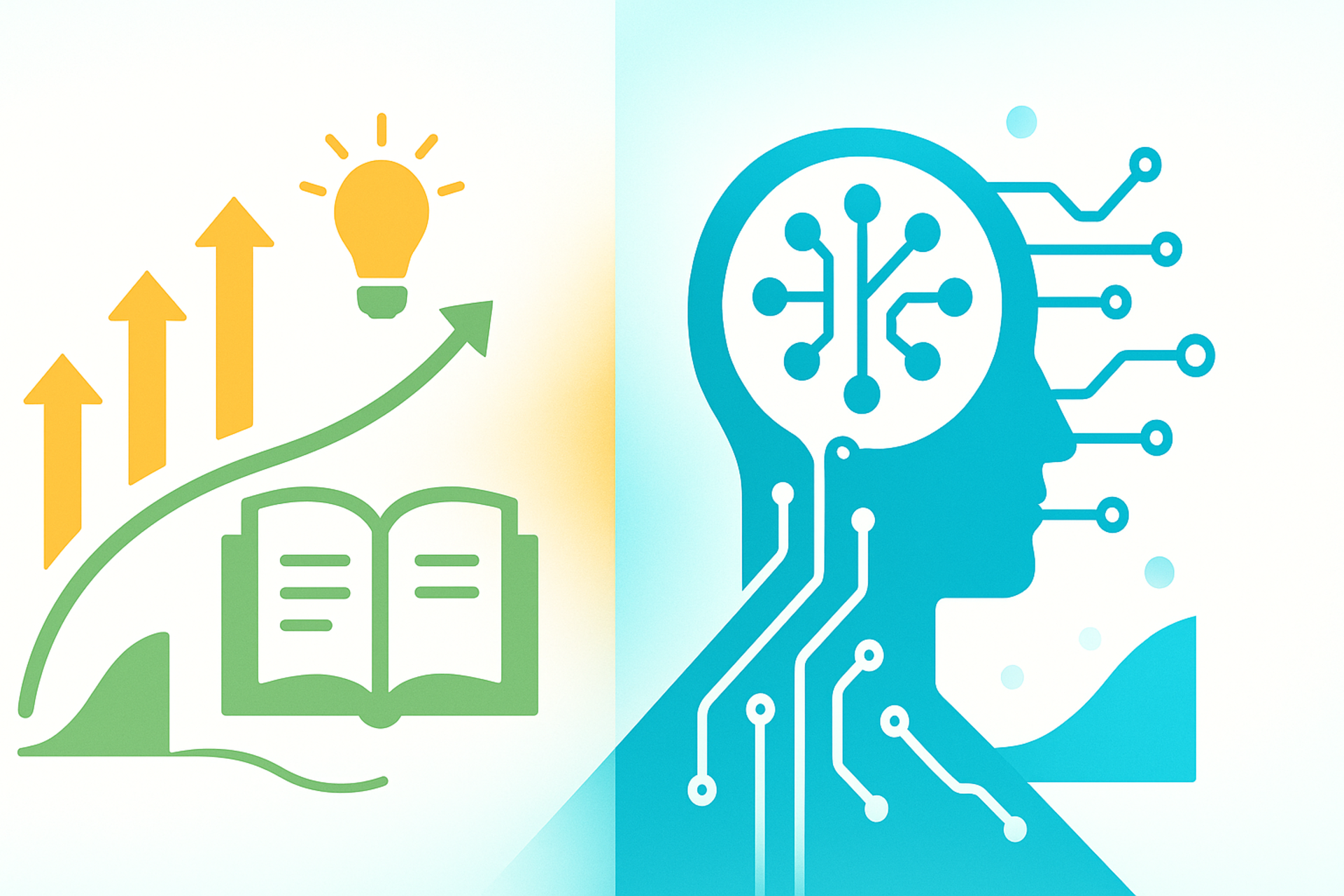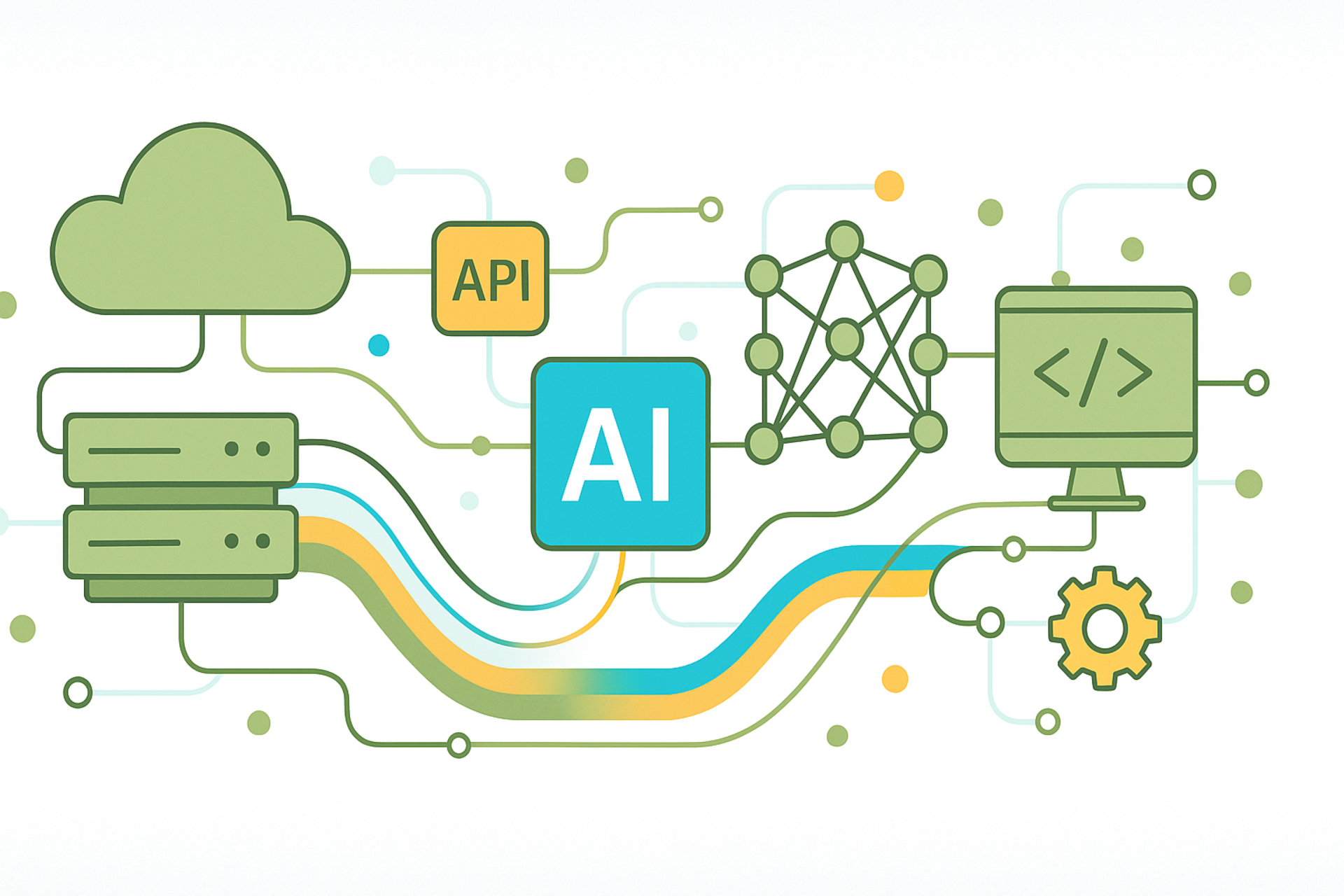Learning Should Flow, Not Fight You
I've been teaching Go for over a decade, and I've watched thousands of developers work through our courses. The best learning happens when the tools disappear and the concepts take center stage. Every time a student has to hunt for a file, switch contexts manually, or squint at poorly formatted code, that's cognitive load that should be spent understanding channels or interface design.
So we asked ourselves: what if the platform just worked the way developers expect?
Download Everything With One Click
The most requested feature we've heard over the years is simple: "Can I just download all the code?"
Students want to work offline on planes. They want to have a local copy for reference six months from now. They want to follow along in their own environment, not copy-paste snippets from a browser.
Now you can. Every course has a download button that packages all the source code, organized by module, into a single zip file. Click it, extract it, and you have the complete course codebase ready to explore.

The download button is right there on the course landing page, next to the Editor Settings. One click and you have everything.
Click Any File Path to Open It in Your Editor
This one is my favorite, and it fundamentally changes how you interact with course material.
You're reading about a particular implementation pattern. The material references handlers/user.go:47. Instead of hunting for the file, navigating to the right directory, opening it, and scrolling to line 47, you just click the file path in the course material. It opens in VS Code, Cursor, IntelliJ, or whatever you've configured, at exactly the right location.

When you first click a file path, you'll see this settings dialog. Choose your preferred editor from the dropdown: VS Code, Cursor, IntelliJ IDEA, GoLand, Sublime Text, or define a custom URL scheme. Your preference is saved per-course, so you only need to set it once.
Why this matters: When you're learning concurrency patterns or debugging a subtle interface issue, the ability to jump directly from explanation to implementation without friction is huge. Your mental model stays intact.
A Course Experience Built for Developers
We completely rebuilt how you navigate course content. The new viewer embraces what developers actually want: full-width layouts, keyboard-driven navigation, and code that looks like code.

The agenda view gives you the complete course structure at a glance. Each module expands to show individual slides with descriptions, so you know exactly what you'll be learning. Notice those "Start" buttons? Click one and you jump directly into that slide.

Look at that code. Proper syntax highlighting for Go. The file path at the bottom (net/examples/app/httpd/httpd.go) is clickable, taking you directly to that file in your editor. And at the very bottom of the code block, you can click to open the file directly. No more copying and pasting, no more hunting through directories.
The sidebar navigation shows you exactly where you are in the course. Arrow keys move between slides. Press ‘p' for presentation mode. Everything works the way you'd expect it to work.
Profile Management Without the Hassle
This one's less exciting but equally important: you can now manage your own profile without emailing support. Update your name when you switch companies or have a branding change. Change your email when moving from corporate to personal. Control what communications you receive from us. It's all self-service now, available from the dropdown in the navigation menu.
Everything Is Faster
You probably won't notice these improvements, which means they're working. Blog articles that used to take 100-200ms to load now appear instantly. The platform handles hundreds of concurrent users without breaking a sweat. Templates load on first request without delay. Your browser caches everything intelligently, so repeated visits are lightning fast.
None of these individually transform the experience. Together, they make the platform feel snappy and responsive in ways that are hard to quantify but easy to feel.
Why These Changes Matter
On the surface, these are convenience features. Download buttons. Editor integration. Faster page loads. Syntax highlighting.
But what they really do is reduce cognitive friction. Every time you have to context-switch (find a file manually, copy-paste code, wait for a page to load) that's brainpower that could be spent understanding why a goroutine deadlocks or how interface composition works.
Great training platforms don't call attention to themselves. They disappear, leaving you alone with the concepts.
What's Next
We're not done. Here's what we're working on: progress tracking so you can see exactly where you are in a course, bookmarking for specific slides you want to reference later, the ability to add your own notes and annotations directly in the platform, and better mobile responsiveness for learning on tablets and phones.
And we're always listening. If you have ideas for how to make the platform better, let us know. The best features often come from students saying "wouldn't it be nice if…"
The Bottom Line
These updates aren't about flashy features or marketing bullet points. They're about making the hard work of learning Go just a little bit easier.
Download a course and have it ready offline. Click a file path and land exactly where you need to be. Navigate slides with your keyboard like the developer you are. See your code with proper syntax highlighting. Load pages instantly without waiting.
None of these will teach you Go. But they'll get out of the way so you can focus on what matters: understanding how to write idiomatic, concurrent, production-ready Go code.
And that's what we're here for.








